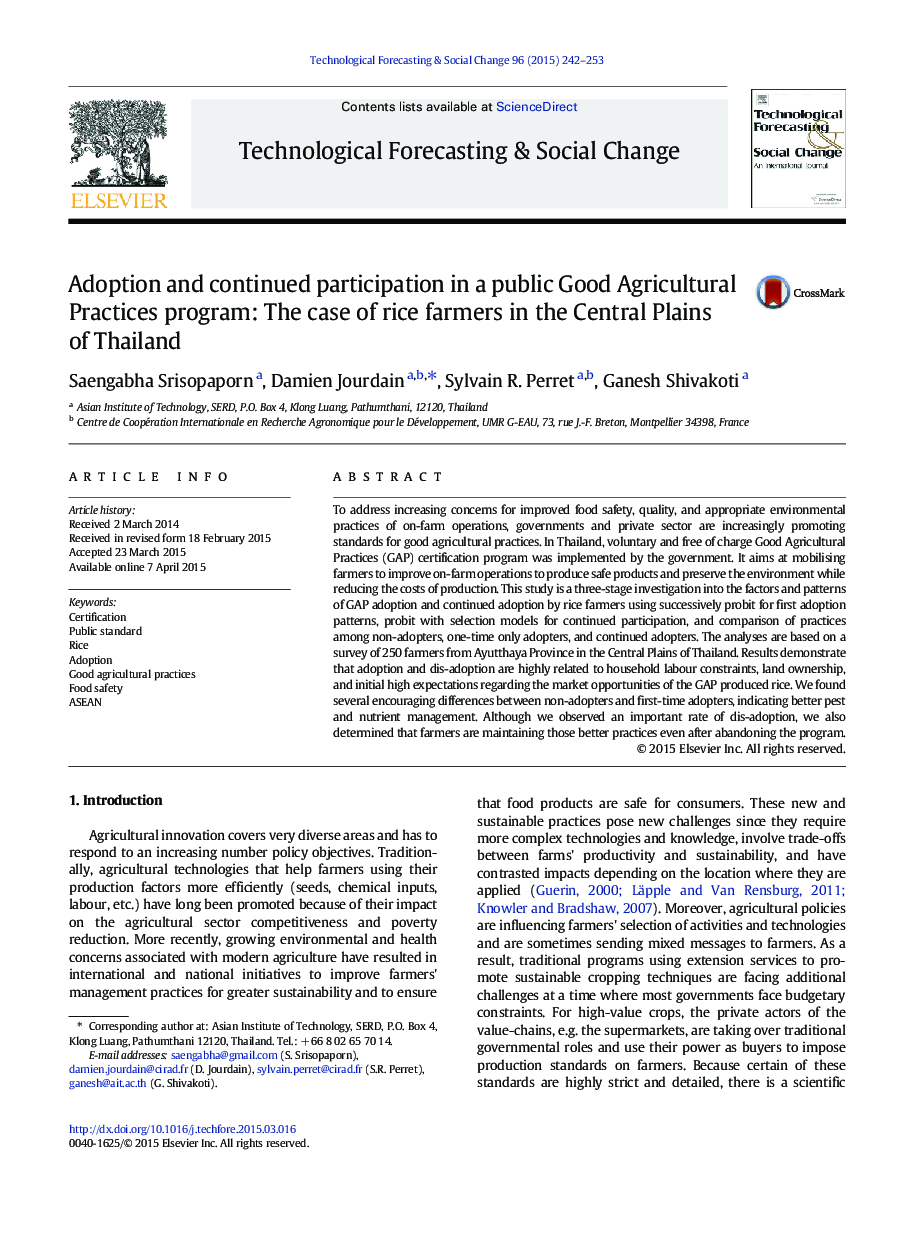| کد مقاله | کد نشریه | سال انتشار | مقاله انگلیسی | نسخه تمام متن |
|---|---|---|---|---|
| 896453 | 1472404 | 2015 | 12 صفحه PDF | دانلود رایگان |
• We analysed Thai rice farmers adoption and continued adoption of a GAP program.
• We compared agronomic practices between never, only-once, and continued adopters.
• Labour constraints are likely preventing adoption; farmer to farmer diffusion is not taking place.
• Land renters are less likely to continue adopting.
• Adopters apply pesticides less often, and continue that practice even if disadopting.
To address increasing concerns for improved food safety, quality, and appropriate environmental practices of on-farm operations, governments and private sector are increasingly promoting standards for good agricultural practices. In Thailand, voluntary and free of charge Good Agricultural Practices (GAP) certification program was implemented by the government. It aims at mobilising farmers to improve on-farm operations to produce safe products and preserve the environment while reducing the costs of production. This study is a three-stage investigation into the factors and patterns of GAP adoption and continued adoption by rice farmers using successively probit for first adoption patterns, probit with selection models for continued participation, and comparison of practices among non-adopters, one-time only adopters, and continued adopters. The analyses are based on a survey of 250 farmers from Ayutthaya Province in the Central Plains of Thailand. Results demonstrate that adoption and dis-adoption are highly related to household labour constraints, land ownership, and initial high expectations regarding the market opportunities of the GAP produced rice. We found several encouraging differences between non-adopters and first-time adopters, indicating better pest and nutrient management. Although we observed an important rate of dis-adoption, we also determined that farmers are maintaining those better practices even after abandoning the program.
Journal: Technological Forecasting and Social Change - Volume 96, July 2015, Pages 242–253
